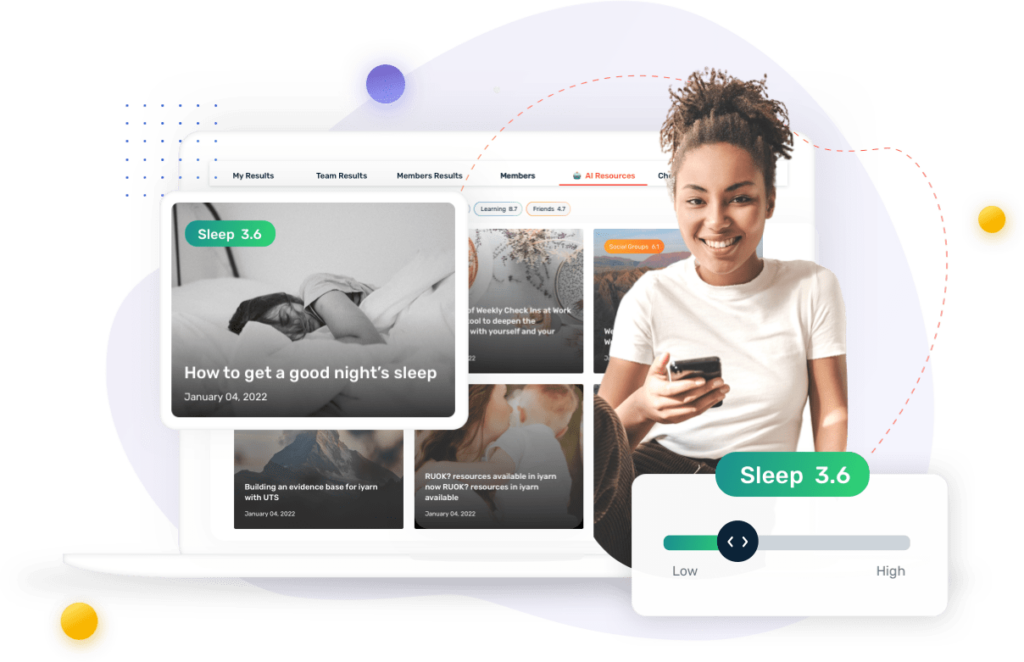The Digital Wheel Of Life
The wheel of life is one of the best and most simple tools for personal growth and development. The advent of the wheel of life came about in the 1960s as a business and life coaching tool, but has developed over time as more people used and applied it for other purposes, such as to help find balance in life.
The wheel of life covers 7 key areas:
Career
Financial
Spiritual
Physical
Intellectual
Family
Social
We’re going to dive into how to use the tool to improve areas of your life for greater mental and physical wellbeing.
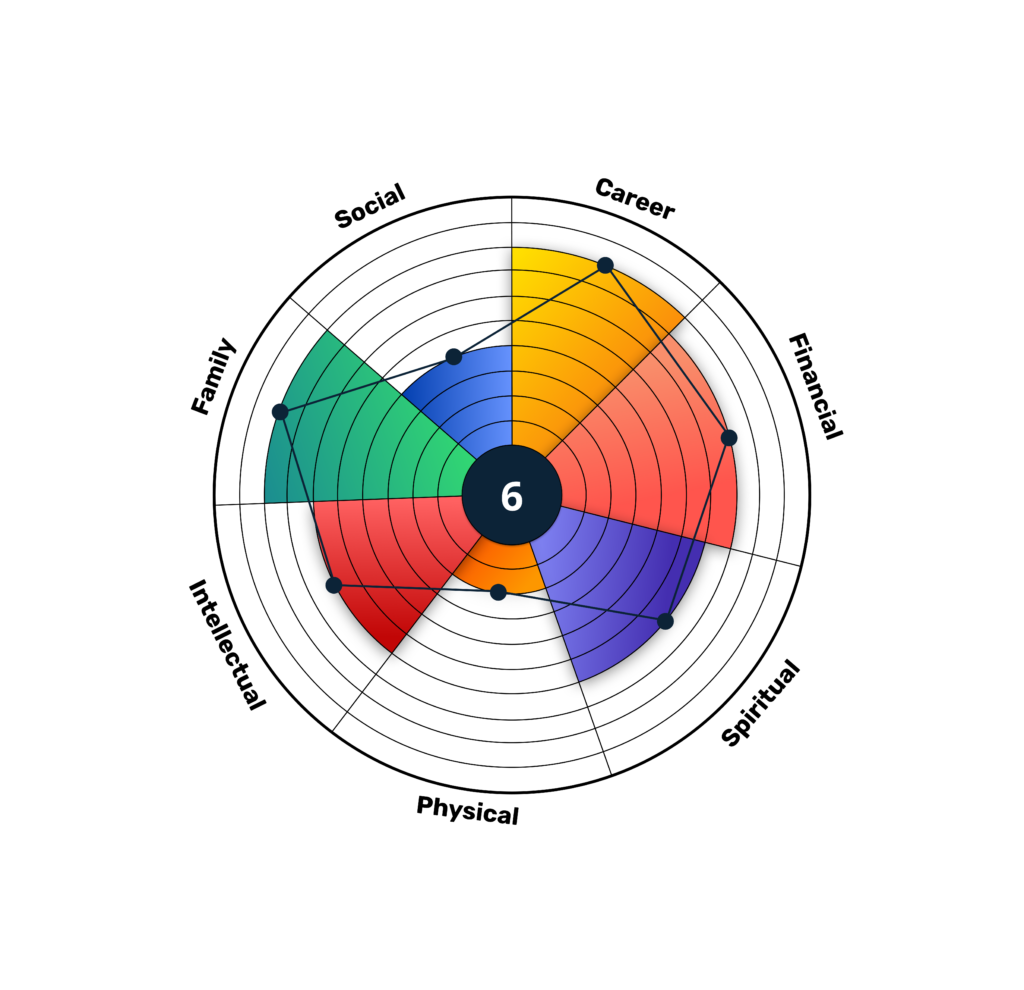
How Do I Use The Wheel Of Life?
Popularised by notable people including Tony Robbins, Paul J. Meyer, and Zig Ziglar, the wheel of life is used by everyone from psychologists to religious users to business and life coaches.
The great thing about this tool is that it’s very quick to complete and can give an objective score of how you’re going in different areas of life, which can be tracked using iyarn over time.
By checking in on these 7 different areas, you get a powerful visualisation of where you’re doing well and where you need to invest more energy.
You can explore these areas by asking yourself some quick questions…
Social
How are my relationships with your friends and coworkers? Do I have a busy social life? Am I trying new activities and socialising with new groups of people?
Career
How am I going with earnings, responsibility, personal development, career path growth, and other priorities as an employee, freelancer, retiree, or business owner?
Financial
How are my personal finances? How am I feeling about money and achieving my financial goals?
Spiritual
How am I going in my spiritual practice? (This can be mindfulness, religion, meditation or other).
Physical
This includes diet, exercise, overall medical health, and self-care. Objectively, how healthy am I right now?
Intellectual
How intellectually stimulated am I? (You can use this area to assess yourself with reading, learning, culture, the pursuit of education, and travel).
Family
Do I feel I have happy, secure, loving relationships? Is there anyone I wish to be closer with or improve my relationship with? (This includes immediate family members and extended family members).
The Simple Tool for The Wheel Of Life
iyarn is an easy tool that can be used to check in on 7 areas included in the wheel of life. This tool is fantastic reminder to keep the focus areas and track over time.
We’ve created a public check in based on the wheel of life, click the button below. All data is anonymous.
Alternatively, we have a range of templates available on our mobile and web app, including the wheel of life. This means you can set up your wheel in 4 easy clicks, seamlessly check in on all 7 areas, and track how you’re going over time, without having to draw up and keep track of multiple pieces of paper.
You also have the option to completely customise your wheel name, segments and descriptions via the create new function once you log in.
You can find the wheel of life template in our personal templates section:
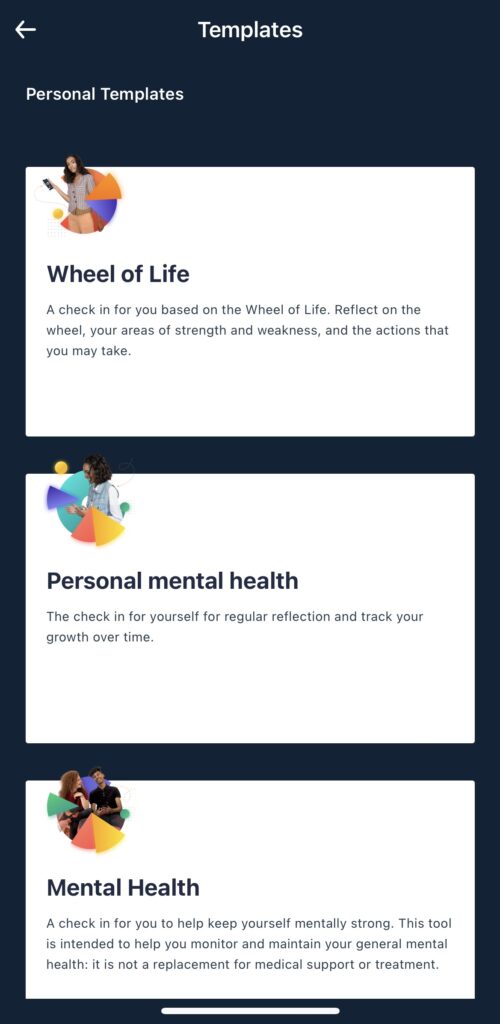
Once you’ve selected the wheel of life template you can see the different focus areas to check in on:
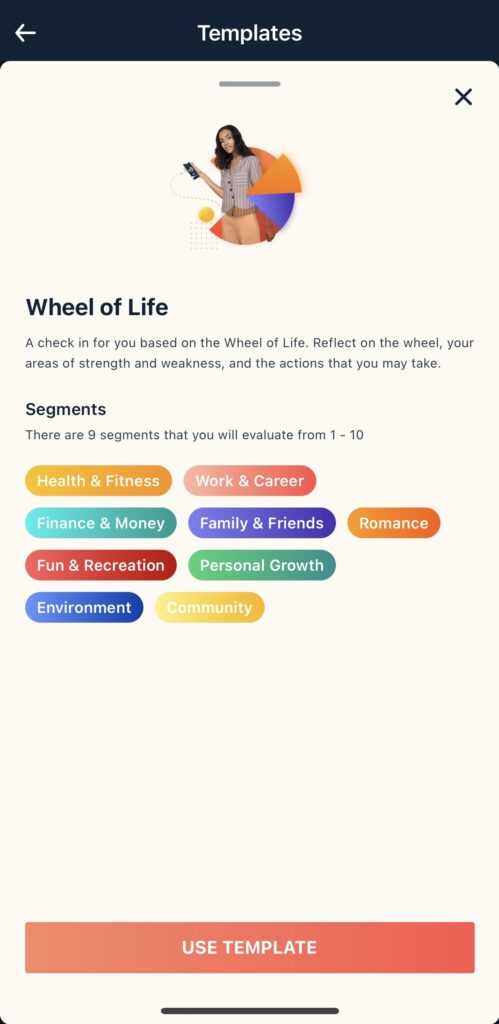
In this example, you can see what a populated wheel looks like after a check in in our downloadable PDF reports. We’ve scored higher in “family & friends” and low in “community”.
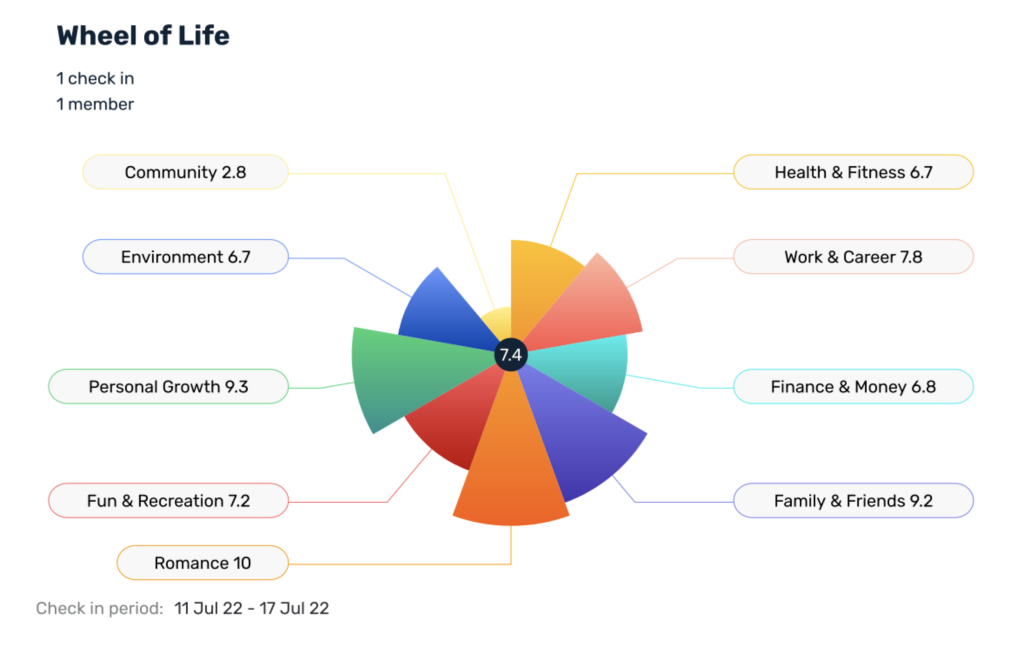
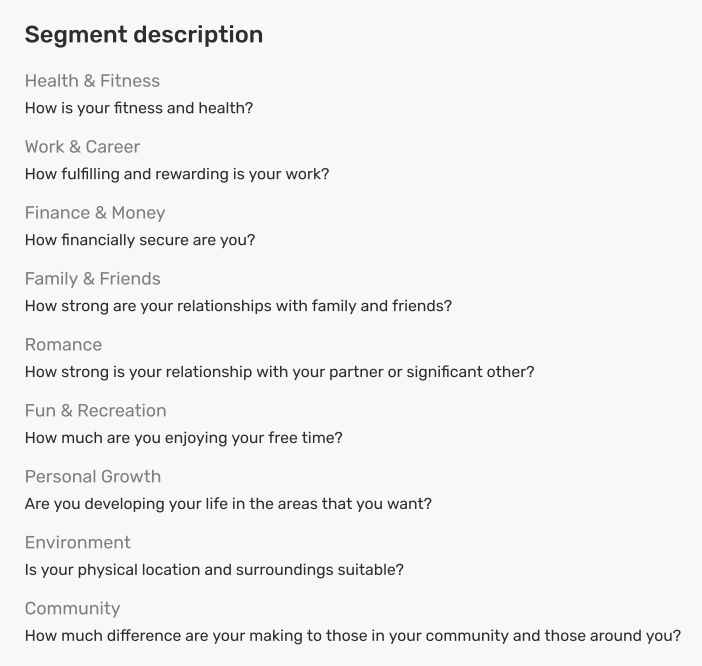
iyarn is easy to share results with a friend or invite others to complete a check in. It’s a great way to start a conversation. If we were really stuck on one of the areas in the wheel of life, we could reach out to friends or mentors to see how they cope with similar challenges.
Try iyarn today. There is a free version here that is perfect to get started.




